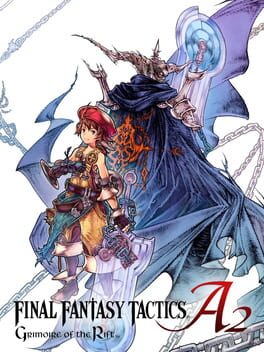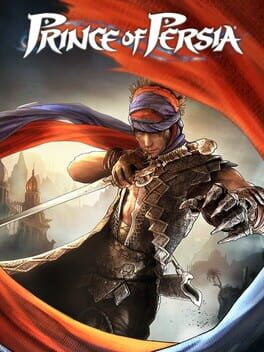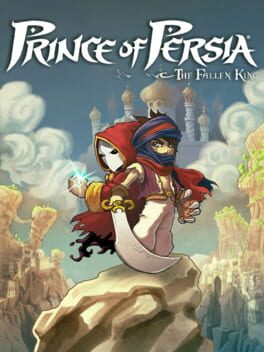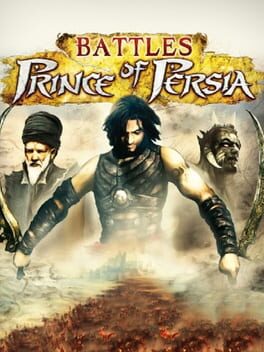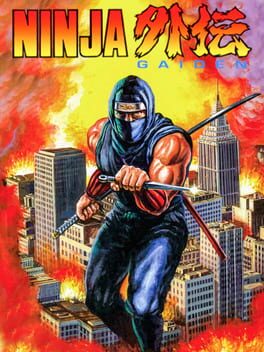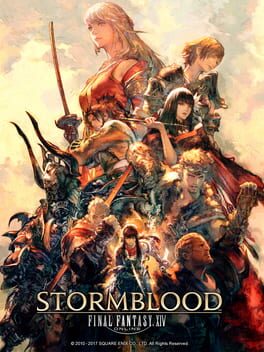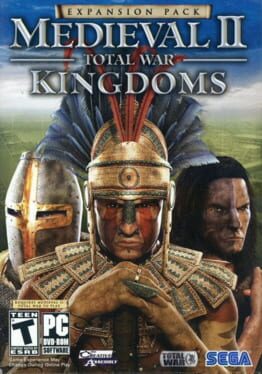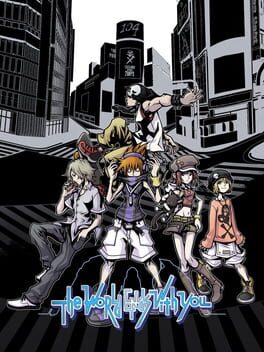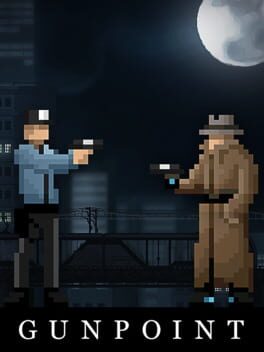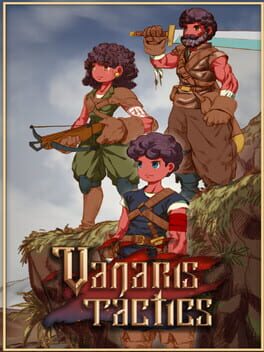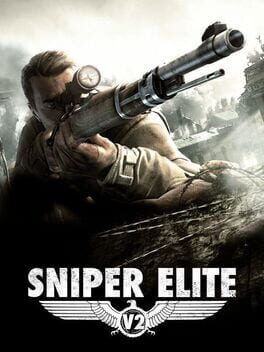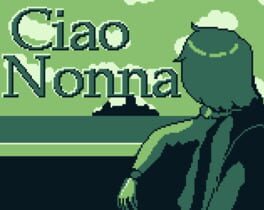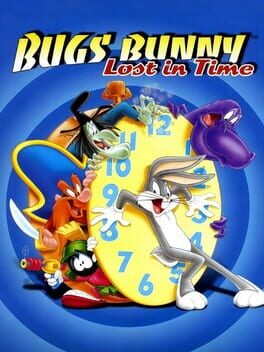petro_sino
Grimoire of the Rift feels like a better version of the original Tactics game for GBA: it plays much more tactically with great maps designed around vertical movement and chokepoints, compared to half the Advance battles being fought over plains. Jobs are even more and even better than before, it has a Judge system that doesn't actively try to punish the player for the sake of it but instead it offers a risk\reward calculation. There are two solid issues that make me reluctant to recommend the game though:
- Luso is a spoiled brat and I don't really like his arc, compared to basically all the other characters in the game. He feels incomplete, a canvas for the young kid who's playing the game, thus the story and the plot points feel less poignant because there's a 13 years old kid at the steering wheel, who has no pressure, no anxiety, no real rhyme or reason to be there if not for "the fun of it". I get it, Luso, you haven't got a younger brother who gets in and out of hospitals every other day, you don't have issues with the Church either, but a bit more agency wouldn't have hurt.
- the game can suddenly hit you with difficulty spikes, crawling to a halt the experience. It is very jarring and it happens multiple times. It's a pity that the best combat, the best storylines and the best job synergies are hidden at what is essentially the end of the game, because it's promising, fun and engaging to just play the game from the middle point to its ending. You'll feel much better when you're done playing than when you're starting out, yet in order to get started you'd have to have a good first couple hours of gameplay ... what a pity really.
It's a great game with solid tactical decisions, planning and fun factor, yet it doesn't really respect your time and oftentimes you'll find yourself skipping through dialogue because it's not the best. If you plan to start the game, don't forget to play through the House Bowen and the Frimelda questlines, since to me they are its peak in content, storyline and Final Fantasy factor.
- Luso is a spoiled brat and I don't really like his arc, compared to basically all the other characters in the game. He feels incomplete, a canvas for the young kid who's playing the game, thus the story and the plot points feel less poignant because there's a 13 years old kid at the steering wheel, who has no pressure, no anxiety, no real rhyme or reason to be there if not for "the fun of it". I get it, Luso, you haven't got a younger brother who gets in and out of hospitals every other day, you don't have issues with the Church either, but a bit more agency wouldn't have hurt.
- the game can suddenly hit you with difficulty spikes, crawling to a halt the experience. It is very jarring and it happens multiple times. It's a pity that the best combat, the best storylines and the best job synergies are hidden at what is essentially the end of the game, because it's promising, fun and engaging to just play the game from the middle point to its ending. You'll feel much better when you're done playing than when you're starting out, yet in order to get started you'd have to have a good first couple hours of gameplay ... what a pity really.
It's a great game with solid tactical decisions, planning and fun factor, yet it doesn't really respect your time and oftentimes you'll find yourself skipping through dialogue because it's not the best. If you plan to start the game, don't forget to play through the House Bowen and the Frimelda questlines, since to me they are its peak in content, storyline and Final Fantasy factor.
Quirky and interesting perspective on the Ninja Gaiden idea, despite looking like it could never work, it sort of did? Hear me out.
The early DS games had to display in full what the console was able to do. A touchpad wasn't anything new at the time, but something as responsive as a modern handheld device (from which I'm typing this review by the way) was completely and utterly game changing, even if it was just a gimmick. Most games were gimmicks, at their hearts, very few titles utilized the full potential of the touch screen more than a few times; even fewer were entirely basing their gameplay on the new technology, which in and out of itself is a crowning achievement. I respect the dev team for pulling through this.
The game is kind of ass though. Ninja Gaiden has to be precise with its input and, punishing as it is, you'll sometimes be screwed and there's nothing you can do. It feels unfair and it takes enormous effort to beat.
Everything else gets my seal of approval, the prerendered backgrounds look fantastic and the atmosphere is stellar. Holding the console vertically can get tiring when you're playing this game, so I'd recommend playing it just for its novelty and as a time capsule of early DS games, more than anything. If you want to play a Ninja Gaiden for its tight gameplay, you can go and play Dead or Alive or get your hands on the OG Xbox, but at the same time Dragon Sword works just as well as the intended to-go & portable alternative.
The early DS games had to display in full what the console was able to do. A touchpad wasn't anything new at the time, but something as responsive as a modern handheld device (from which I'm typing this review by the way) was completely and utterly game changing, even if it was just a gimmick. Most games were gimmicks, at their hearts, very few titles utilized the full potential of the touch screen more than a few times; even fewer were entirely basing their gameplay on the new technology, which in and out of itself is a crowning achievement. I respect the dev team for pulling through this.
The game is kind of ass though. Ninja Gaiden has to be precise with its input and, punishing as it is, you'll sometimes be screwed and there's nothing you can do. It feels unfair and it takes enormous effort to beat.
Everything else gets my seal of approval, the prerendered backgrounds look fantastic and the atmosphere is stellar. Holding the console vertically can get tiring when you're playing this game, so I'd recommend playing it just for its novelty and as a time capsule of early DS games, more than anything. If you want to play a Ninja Gaiden for its tight gameplay, you can go and play Dead or Alive or get your hands on the OG Xbox, but at the same time Dragon Sword works just as well as the intended to-go & portable alternative.
2008
Cel shading makes this game a prime example of how good design thriumps over graphics, it's been fifteen years and this game looks incredible as the first day I've played it back in the day.
Prince of Persia didn't look so good after Assassin's Creed took its spot as Ubisoft's breadwinner worldwide, so they had to reinvent themselves. If Two Thrones was a witty and fun game, 2008 had to be something else.
Cinematic experience, baybee
Despite half of the game playing itself and no game over, it looks incredible. That's about it? It's short, sweet and looks and feels incredible to play, but at the heart of it, there's no real substance. I love the idea of playing this game, solving its puzzles and platforming, which are rewarding, mind you. Simply put, a somewhat repetitive combat laced with QTEs and an asinine ending, locked behind a DLC, ruined the enjoyment for me.
Despite that, Prince of Persia 2008 was a success. What gives that it was abandoned? Ubisoft failed to use its success and it was left then and there, letting the sands fall where they may. A movie, rebooting the saga? Forgotten Sands, rebooting again the saga? At a certain point, it was enough and it seems like Ubisoft doesn't want to use this IP anymore.
Prince of Persia didn't look so good after Assassin's Creed took its spot as Ubisoft's breadwinner worldwide, so they had to reinvent themselves. If Two Thrones was a witty and fun game, 2008 had to be something else.
Cinematic experience, baybee
Despite half of the game playing itself and no game over, it looks incredible. That's about it? It's short, sweet and looks and feels incredible to play, but at the heart of it, there's no real substance. I love the idea of playing this game, solving its puzzles and platforming, which are rewarding, mind you. Simply put, a somewhat repetitive combat laced with QTEs and an asinine ending, locked behind a DLC, ruined the enjoyment for me.
Despite that, Prince of Persia 2008 was a success. What gives that it was abandoned? Ubisoft failed to use its success and it was left then and there, letting the sands fall where they may. A movie, rebooting the saga? Forgotten Sands, rebooting again the saga? At a certain point, it was enough and it seems like Ubisoft doesn't want to use this IP anymore.
Cute platformer that takes a lot of lessons from the older games of the series compared to its most successful 3D iterations, The Fallen King is able to add some context to the story of PoP 2008 (how many times has Ubisoft rebooted Prince of Persia? We'll never know).
Presentation aside which is fair but not stellar, sometimes the game looks ugly as well, yet the atmosphere and the gameplay add a lot of tension and weight to the game. Sadly, there is no replayability, once the game is cleared there is no reason to get back to it.
Played a lot of it when I was a kid, I wasn't left as impressed as I thought I would've been. You have to be a fan of PoP 2008, 2D platformers and DS jank games to enjoy this.
Presentation aside which is fair but not stellar, sometimes the game looks ugly as well, yet the atmosphere and the gameplay add a lot of tension and weight to the game. Sadly, there is no replayability, once the game is cleared there is no reason to get back to it.
Played a lot of it when I was a kid, I wasn't left as impressed as I thought I would've been. You have to be a fan of PoP 2008, 2D platformers and DS jank games to enjoy this.
Played a long time ago with my brother back in summer, despite feeling nostalgic about Battles of Prince of Persia, the game is at best a different take on the Prince of Persia sweep that took place in the 00s, at worst it's a simple rock-paper-scissors card game with tactical implications.
The game can be fun and the card system is interesting, especially for the time it came out. Not only that, but not only we have a weapons triangle system (Fire Emblem? In my GAMES??? How dare they), we also have a size triangle system: as bows beat lances and lances beat swords, middle sized units (cavalry) beat small sized units (infantry) which in turn beat huge sized units (giants, elephants). It creates a fun dynamic where a unit of small swordsmen can overcome a huge pain in the butt in the form of a giant (archer unit) for the cavalry (middle sized lance units).
It is harder to explain than to try out, but if you like Prince of Persia and tactical games, it's something check out. Definitely different.
The game can be fun and the card system is interesting, especially for the time it came out. Not only that, but not only we have a weapons triangle system (Fire Emblem? In my GAMES??? How dare they), we also have a size triangle system: as bows beat lances and lances beat swords, middle sized units (cavalry) beat small sized units (infantry) which in turn beat huge sized units (giants, elephants). It creates a fun dynamic where a unit of small swordsmen can overcome a huge pain in the butt in the form of a giant (archer unit) for the cavalry (middle sized lance units).
It is harder to explain than to try out, but if you like Prince of Persia and tactical games, it's something check out. Definitely different.
1988
People ate good in the NES era, I'll tell you, I can see myself playing this game almost everyday trying every single time to beat the final gauntlet, as I tried during this month. Despite its age, Ninja Gaiden controls incredibly well and the wall jumping adds a lot of strategy and cool factor to the platforming. I'll just say that some enemies' placements feel unfair and the knockback is frustrating, but once you get used to it and know the lay of the land, it's not that bad. It's not an issue when they respawn if you never get hit and get out of there as soon as possible.
The perfect game to speedrun or just casually enjoy, it may be on the hard side but its story sections, levels and music make it all worth in the end: easy to play, hard to master, it feels incredible to beat.
The perfect game to speedrun or just casually enjoy, it may be on the hard side but its story sections, levels and music make it all worth in the end: easy to play, hard to master, it feels incredible to beat.
Not as bad as everyone makes it to be, despite having a weaker story composition (not its fault coming after THE Heavensward), its mechanics and fights are its strong point.
I am now a son of the Azim steppe. Kugane looks incredible and so does the Gyr Albania region. Stormblood rocks, I had a lot of fun with it and I heard only good things from Shadowbringers onwards. If this is supposed to be the middle ground, that's something to expect alright.
I am now a son of the Azim steppe. Kugane looks incredible and so does the Gyr Albania region. Stormblood rocks, I had a lot of fun with it and I heard only good things from Shadowbringers onwards. If this is supposed to be the middle ground, that's something to expect alright.
For the first time in probably years I've sit down and played through all campaigns in this expansion, through all factions. Each campaign has its own gimmicks and some work, some don't.
Americas: Easily the weakest campaign, the only remotely interesting faction to play as is the Spanish in their yellow map-painting endeavors, but it soon falls out once the Aztecs and friends are dealt with. The issue with the Americas map is in its design: outside of fighting against other factions, it is the Rus experience all over again from vanilla Med II. Fighting rebels as the Apache and Mayans is no fun either, but at least the religion mechanics and the setting are interesting.
2/5 stars, no wonder I paste mods to this folder.
Teutonic: the Teutonic campaign has a weird gimmick, where you fight over lots of small villages meaning to be sort of border villages, but having to deal with so many small homlets when the fun is in actual carnage can only be so distracting: faction balance is fun, tight and the map, outside of Scandinavia, is already occupied by factions. Playing as either the Teutonic Order or the Lithuanians can drastically change the approach and no time is wasted, only war matters.
4/5 stars.
Crusades: we're getting closer to the meat of the expansion. Crusades and Teutonic both show that the game focusing on a small map can only do good to its mechanics, its factions and its flavor. Each and every side has their own strenghts and migraines to deal with, from Byzantines having to deal with the Venetians to Jerusalem having to babysit Anthioc and having to deal with Mamluks, Turks and Mongols. All of this makes for an eventful campaign whatever faction you choose to play as.
5/5 stars.
Britannia: What a joy to play. Aside from Ireland's troops being mercenary reskins, Britannia has a lot of love for every single faction you choose. Not only, but having to deal with management, riots, culture and forts all across the Isles makes the game quite intense despite its supposedly small scale. Britannia is able to showcase the best of Medieval II roleplaying and tactical gameplay to its fullest. It is simply fun and exhilarating, may you be playing as the Danes knocking on ports left and right, Scotland taking norhtern settlements away from England, and so on and so forth. Truly the Kingdoms were thefriends enemies we made along the way.
5/5 stars.
Kingdoms to this day is considered the epitome of Medieval II, from its flourishing modding community to its ease of play and different perspective to waging war. No wonder people play this game after 15 years, with the way CA has been treating its customers and workers; something like Kingdoms happened once, maybe twice if you consider Fall of the Samurai, and never again will. Let's savor it, yeah?
Americas: Easily the weakest campaign, the only remotely interesting faction to play as is the Spanish in their yellow map-painting endeavors, but it soon falls out once the Aztecs and friends are dealt with. The issue with the Americas map is in its design: outside of fighting against other factions, it is the Rus experience all over again from vanilla Med II. Fighting rebels as the Apache and Mayans is no fun either, but at least the religion mechanics and the setting are interesting.
2/5 stars, no wonder I paste mods to this folder.
Teutonic: the Teutonic campaign has a weird gimmick, where you fight over lots of small villages meaning to be sort of border villages, but having to deal with so many small homlets when the fun is in actual carnage can only be so distracting: faction balance is fun, tight and the map, outside of Scandinavia, is already occupied by factions. Playing as either the Teutonic Order or the Lithuanians can drastically change the approach and no time is wasted, only war matters.
4/5 stars.
Crusades: we're getting closer to the meat of the expansion. Crusades and Teutonic both show that the game focusing on a small map can only do good to its mechanics, its factions and its flavor. Each and every side has their own strenghts and migraines to deal with, from Byzantines having to deal with the Venetians to Jerusalem having to babysit Anthioc and having to deal with Mamluks, Turks and Mongols. All of this makes for an eventful campaign whatever faction you choose to play as.
5/5 stars.
Britannia: What a joy to play. Aside from Ireland's troops being mercenary reskins, Britannia has a lot of love for every single faction you choose. Not only, but having to deal with management, riots, culture and forts all across the Isles makes the game quite intense despite its supposedly small scale. Britannia is able to showcase the best of Medieval II roleplaying and tactical gameplay to its fullest. It is simply fun and exhilarating, may you be playing as the Danes knocking on ports left and right, Scotland taking norhtern settlements away from England, and so on and so forth. Truly the Kingdoms were the
5/5 stars.
Kingdoms to this day is considered the epitome of Medieval II, from its flourishing modding community to its ease of play and different perspective to waging war. No wonder people play this game after 15 years, with the way CA has been treating its customers and workers; something like Kingdoms happened once, maybe twice if you consider Fall of the Samurai, and never again will. Let's savor it, yeah?
The World Ends with You is a statement, both literally and figuratively. The game has a creative approach to street culture, if you will, cultivating its most fresh and inspiring aspects. At the same time, it deals with deep seated fears and expectations of youths everywhere in the world, not just Shibuya, Tokyo, Japan. Clearly it's a different perspective compared to other media aimed at younger audiences but it's true, real and felt. A friend told me: "Had I played this game when I was 15, it would've meant the world to me." I did, so I can only agree.
The gameplay is different, bold as the game itself. It hits way more times that it misses and combat is extremely customizable, with pins of different brands having different effects, damage types and doing numbers depending on said brand being a hit on the streets the fight takes place in or not. When it hits, it's fun and engaging, but when it misses it's the most miserable I've felt playing a game. The soundtrack is incredible; I personally love Long Dream and Calling, but there's stuff for everybody.
As said before, TWEWY has a lot to say and to show. It means a lot to a lot of people for a lot of reasons, but mostly it's because it's a very personal tale and pushes different buttons for different people. Diverse as the brands themselves, going with the flow, against it, up and down, yet statements, always.
The gameplay is different, bold as the game itself. It hits way more times that it misses and combat is extremely customizable, with pins of different brands having different effects, damage types and doing numbers depending on said brand being a hit on the streets the fight takes place in or not. When it hits, it's fun and engaging, but when it misses it's the most miserable I've felt playing a game. The soundtrack is incredible; I personally love Long Dream and Calling, but there's stuff for everybody.
As said before, TWEWY has a lot to say and to show. It means a lot to a lot of people for a lot of reasons, but mostly it's because it's a very personal tale and pushes different buttons for different people. Diverse as the brands themselves, going with the flow, against it, up and down, yet statements, always.
2013
Incredible soundtrack aside, Gunpoint is a solid puzzle game with attitude, sense of humor and different endings depending on what kind of crimes investigation you commit during the gameplay. Gameplay is fast, quick and immediate, even though it's on the easy side. For a time it had a thriving level design community, not unlike Hotline Miami, and you can still try and visit the community hubs, but you can see it's been 10 years since the game came out.
If you main Big Band this game is for you. It looks stylish, it sounds stylish and it will leave an impact on you years after, listening to its soundtrack and reminiscing.
If you main Big Band this game is for you. It looks stylish, it sounds stylish and it will leave an impact on you years after, listening to its soundtrack and reminiscing.
2022
I have mixed feelings for Vanaris Tactics. On one hand, I respect any developer able to do the Final Fantasy Tactics formula justice, since the tactical part of the game is easily its most successful part. On the other hand there are some small blemishes that make me unsure to recommend the game. I'll list a few:
- the game is dominated by green, grey and brown tones. The spritework is nice, but the colors don't give it any love.
- the UI takes a lot of space and the action is very zoomed in, at the same time you cannot move the camera without using the movement keys on your keyboard, defeating the purpose of having a cursor sensitivity. Just stick to controller or keyboard.
- the music does its job, some tracks are quite nice. Special effects are noisy so I recommend tuning them down in the options.
- the story, one of the pillars of its marketing, has an interesting premise and its characters are colorful, yet in its 4-8 hours of runtime, it struggles to give reason for much of what's happening, making sense just at the beginning and then at the end. Half of the time battles are initiated because you happened to walk on someone stealing cookies in a jar and now they want you dead.
Anyways I feel like the game has a lot of soul and would've been perfectly viable if not for small issues like these; it apparently crashes a lot, but in my case it only happened twice, so remember to save your game! The gameplay alone is solid enough for me to recommend the game to any (and maybe only to) SRPG fans.
- the game is dominated by green, grey and brown tones. The spritework is nice, but the colors don't give it any love.
- the UI takes a lot of space and the action is very zoomed in, at the same time you cannot move the camera without using the movement keys on your keyboard, defeating the purpose of having a cursor sensitivity. Just stick to controller or keyboard.
- the music does its job, some tracks are quite nice. Special effects are noisy so I recommend tuning them down in the options.
- the story, one of the pillars of its marketing, has an interesting premise and its characters are colorful, yet in its 4-8 hours of runtime, it struggles to give reason for much of what's happening, making sense just at the beginning and then at the end. Half of the time battles are initiated because you happened to walk on someone stealing cookies in a jar and now they want you dead.
Anyways I feel like the game has a lot of soul and would've been perfectly viable if not for small issues like these; it apparently crashes a lot, but in my case it only happened twice, so remember to save your game! The gameplay alone is solid enough for me to recommend the game to any (and maybe only to) SRPG fans.
2011
2012
It's a fun game until you realize that you'll spend half the time looking at someone's intestines rupturing or his balls splintering into nothingness. The other half is poorly implemented stealth and funny ragdolls.
I will say though that for 2012 the game looks incredible and the multiplayer at its peak was fun and challenging.
I will say though that for 2012 the game looks incredible and the multiplayer at its peak was fun and challenging.
2020
Ciao Nonna is a deeply personal tale about coming back to a place unlike it was before. I will ramble a bit in the review, which is extremely biased for personal reasons; gameplay-wise, Ciao Nonna is a short text-based adventure, where we play as Ofelia, coming to the place she lived as a kid for probably the last time.
We will always carry with us the memories of old, the people who left us will never die as long as we live true to our bonds. My uncle told me that I should try working somewhere else, not to end up like him (his words) while we were gardening for a very low wage. He passed away two years ago, I miss him a lot but it's thanks to his support that I made this choice.
And it's also thanks to you, zio, that I am who I am. I will visit, don't worry. We're doing all fine. Ciao Nonna reminded me a lot of this feeling. It's definitely not for everyone but it's worth a try.
We will always carry with us the memories of old, the people who left us will never die as long as we live true to our bonds. My uncle told me that I should try working somewhere else, not to end up like him (his words) while we were gardening for a very low wage. He passed away two years ago, I miss him a lot but it's thanks to his support that I made this choice.
And it's also thanks to you, zio, that I am who I am. I will visit, don't worry. We're doing all fine. Ciao Nonna reminded me a lot of this feeling. It's definitely not for everyone but it's worth a try.
Timeless classic of Christmas, year 2005. Everybody and their mums were playing on their shiny Ps2 libraries while I was blowing dust out of my older brother's grey brick. To me this game means a lot, being probably one of the first games I ever played, and coming back to it I felt a bit of dread: what if I had bad taste?!
Bugs Bunny: Lost in Time is not a bad game at all! Its controls can feel a bit outdated and some levels are a bit frustrating but the fun and chaotic mess of a Bugs Bunny cartoon is captured in its truest form by this collectathon, almost entirely voice acted (take that, gaming year of 2023! Bugs Bunny did it first!). One of my most cherished memories was playing the snow level in the Medieval world and talking about school with my mother present in the room.
At the same time, it's a bit janky. As I said, the controls aren't the best and thankfully Bugs will automatically jump when running towards a cliff, so that you can correct the course. Meanwhile, some levels like the car chase, the trolly level and most of the space era ones can feel like you cannot control the bunny. Time and again, by trial and error, I was able to finish and 100% the game, at time needing to go back to older levels just to collect all golden carrots. I was greeted by a warm, orange tinted screen, telling me Bugs was finally able to go to the beach.
When you're a kid, you don't know you're making memories, you're just having fun. This game, Digimon World, Spyro, just to name a few, have made me reminisce the old times, when me, my brother and my sister were spending time together.
I am calling both of them, right after I'm done writing. Visiting the past is lonely business, you may be mentally there but no one else is; reminiscing together instead is a fun and warm activity. We may live in different cities and live different lives, but we have in common all the good fun we had.
Bugs Bunny: Lost in Time is not a bad game at all! Its controls can feel a bit outdated and some levels are a bit frustrating but the fun and chaotic mess of a Bugs Bunny cartoon is captured in its truest form by this collectathon, almost entirely voice acted (take that, gaming year of 2023! Bugs Bunny did it first!). One of my most cherished memories was playing the snow level in the Medieval world and talking about school with my mother present in the room.
At the same time, it's a bit janky. As I said, the controls aren't the best and thankfully Bugs will automatically jump when running towards a cliff, so that you can correct the course. Meanwhile, some levels like the car chase, the trolly level and most of the space era ones can feel like you cannot control the bunny. Time and again, by trial and error, I was able to finish and 100% the game, at time needing to go back to older levels just to collect all golden carrots. I was greeted by a warm, orange tinted screen, telling me Bugs was finally able to go to the beach.
When you're a kid, you don't know you're making memories, you're just having fun. This game, Digimon World, Spyro, just to name a few, have made me reminisce the old times, when me, my brother and my sister were spending time together.
I am calling both of them, right after I'm done writing. Visiting the past is lonely business, you may be mentally there but no one else is; reminiscing together instead is a fun and warm activity. We may live in different cities and live different lives, but we have in common all the good fun we had.
